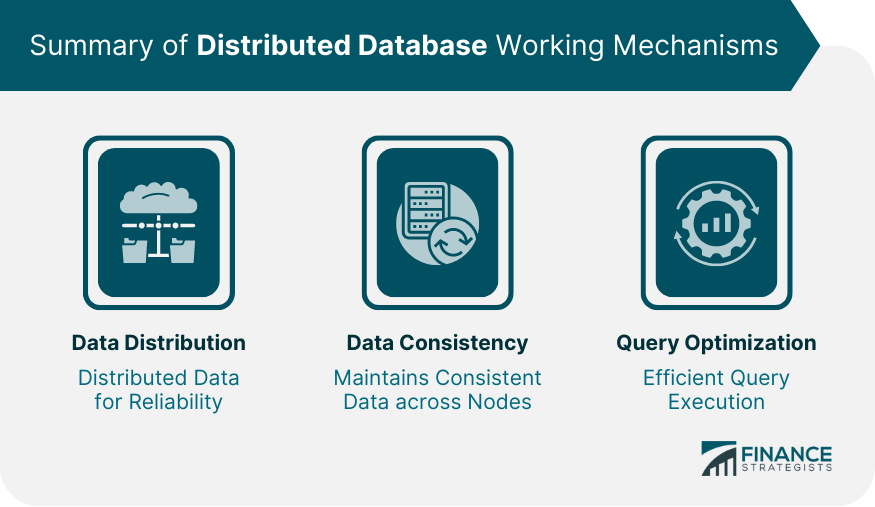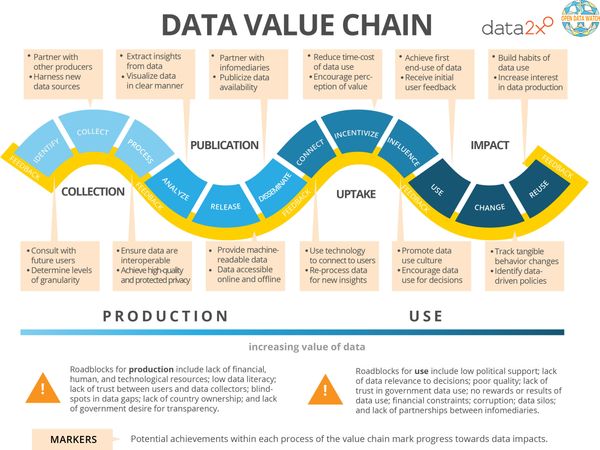Overview
Introduction to the digital age
In today’s digital age, businesses are constantly seeking ways to gain a competitive advantage. The rapid advancements in technology have paved the way for the emergence of data, analytics, and cloud computing as powerful tools for businesses to thrive in this digital landscape. The importance of MongoDB sharding cannot be overstated in this context. MongoDB sharding enables businesses to distribute data across multiple servers, allowing for improved scalability, performance, and availability. By leveraging MongoDB sharding, businesses can effectively handle large volumes of data and ensure seamless operations. With the ability to handle massive amounts of data and provide high availability, MongoDB sharding has become a crucial component in the digital age. It allows businesses to harness the full potential of their data, gain valuable insights, and make informed decisions that drive growth and success.
Importance of data, analytics, and cloud
In today’s digital age, data, analytics, and cloud have become crucial elements for businesses seeking a competitive advantage. The importance of data cannot be overstated, as it provides valuable insights into customer behavior, market trends, and business performance. By leveraging analytics, businesses can make data-driven decisions, identify patterns, and uncover hidden opportunities. Additionally, the cloud offers a scalable and flexible infrastructure that enables businesses to store, manage, and analyze vast amounts of data. This allows for real-time access to information, improved collaboration, and cost savings. Overall, embracing data, analytics, and cloud is essential for businesses to stay relevant and thrive in the digital era.
Benefits of embracing the digital age
The digital age has brought about numerous benefits for businesses. One of the key advantages is the ability to leverage data, analytics, and cloud technologies. By embracing these cutting-edge trends in database management systems, businesses can gain a competitive edge in the market. Data is now considered a valuable asset, and businesses that can effectively collect, analyze, and utilize data have a greater understanding of their customers and market trends. Analytics tools provide insights and patterns that can help businesses make informed decisions and optimize their operations. Cloud technologies offer scalability, flexibility, and cost-efficiency, allowing businesses to store and access large amounts of data without the need for on-premises infrastructure. Embracing the digital age and adopting these technologies can lead to improved efficiency, productivity, and innovation for businesses.
Understanding Data

Types of data
In the digital age, businesses are increasingly relying on data to gain a competitive advantage. There are two main types of data that organizations deal with: structured data and unstructured data. Structured data refers to information that is organized and easily searchable, such as data stored in a traditional relational database using SQL. This type of data is highly scalable and allows for complex queries and analysis. On the other hand, unstructured data refers to information that does not have a predefined structure and is more difficult to organize and analyze. Examples of unstructured data include social media posts, emails, and multimedia content. NoSQL databases are designed to handle unstructured data and provide flexibility and scalability. They allow for the storage and retrieval of large amounts of data without the need for a fixed schema. The scalability of SQL and NoSQL databases is crucial for businesses looking to handle the ever-increasing volume of data in the digital age.
Data collection and storage
In today’s digital age, data collection and storage have become crucial for businesses to gain a competitive advantage. With the increasing reliance on technology and the widespread use of the internet, companies have access to vast amounts of data that can be analyzed and leveraged to make informed decisions. Collecting data from various sources, such as customer interactions, social media, and website analytics, provides valuable insights into consumer behavior, market trends, and business performance. Storing this data securely and efficiently is essential to ensure its integrity and accessibility. Cloud computing has emerged as a powerful solution for data storage, offering scalability, flexibility, and cost-effectiveness. By embracing the digital age and leveraging data, analytics, and cloud technology, businesses can unlock new opportunities, optimize operations, and drive growth.
Data quality and governance
Data quality and governance are crucial aspects of leveraging data, analytics, and cloud for business advantage. In today’s digital age, organizations are generating massive amounts of data from various sources, including customer interactions, transactions, and social media. However, the value of this data lies in its accuracy, completeness, and reliability. Without proper data quality and governance practices in place, businesses risk making decisions based on inaccurate or incomplete information, which can have detrimental effects on their operations and performance. Therefore, it is essential for organizations to prioritize data quality and establish robust governance frameworks to ensure data integrity and consistency. This includes implementing data validation processes, conducting regular data audits, and establishing clear data ownership and accountability. By maintaining high data quality standards and effective governance practices, businesses can unlock the full potential of their data and gain a competitive advantage in the digital landscape.
Harnessing Analytics

Introduction to analytics
In today’s digital age, analytics has become an essential tool for businesses to gain a competitive advantage. With the abundance of data available, organizations are leveraging analytics to extract valuable insights and make data-driven decisions. Analytics allows businesses to uncover patterns, trends, and correlations in large datasets, enabling them to identify opportunities, mitigate risks, and optimize their operations. By harnessing the power of analytics, businesses can better understand their customers, improve their products and services, and drive innovation. In this article, we will explore the importance of analytics in the digital age and how businesses can leverage data, analytics, and cloud technologies to gain a strategic edge.
Types of analytics techniques
There are various types of analytics techniques that organizations can leverage to gain insights from their data. These techniques include descriptive analytics, which focuses on summarizing historical data to understand past trends and patterns. Predictive analytics, on the other hand, uses historical data to make predictions about future outcomes. Prescriptive analytics takes it a step further by providing recommendations and actions based on the insights gained from the data. Another important aspect of analytics is data security, which ensures that the data being analyzed is protected from unauthorized access and breaches. Organizations must prioritize data security to maintain the confidentiality, integrity, and availability of their data. By implementing robust security measures, such as encryption and access controls, organizations can safeguard their data and mitigate the risks associated with data breaches.
Data visualization and interpretation
Data visualization and interpretation play a crucial role in leveraging the power of data, analytics, and cloud for business advantage. With the exponential growth of data in the digital age, it is essential to effectively visualize and interpret data to derive meaningful insights. Data visualization allows businesses to present complex data in a visually appealing and easy-to-understand format, enabling decision-makers to identify patterns, trends, and correlations. By using interactive charts, graphs, and dashboards, organizations can gain a deeper understanding of their data and make data-driven decisions with confidence. Furthermore, data interpretation involves analyzing and extracting valuable information from data sets to uncover hidden opportunities and potential risks. It helps businesses identify key drivers, evaluate performance, and optimize strategies for improved business outcomes. In today’s competitive landscape, organizations that embrace data visualization and interpretation have a significant advantage in harnessing the power of data, analytics, and cloud to drive innovation, improve operational efficiency, and achieve sustainable growth.
Utilizing Cloud Technology

Introduction to cloud computing
Cloud computing has revolutionized the way businesses operate in the digital age. It provides a flexible and scalable solution for storing, managing, and accessing data and applications over the internet. With the increasing reliance on data-driven decision making, cloud computing has become an essential tool for businesses to leverage the power of data and analytics. One of the key aspects of cloud computing is its ability to support database design. Database design plays a crucial role in organizing and structuring data to ensure efficient storage and retrieval. By leveraging cloud-based databases, businesses can optimize their data management processes and improve overall operational efficiency. The cloud also offers advanced features such as automated backups, high availability, and data security, which further enhance the reliability and performance of database systems. In summary, cloud computing provides businesses with a powerful platform to embrace the digital age and leverage data, analytics, and cloud technologies for a competitive advantage.
Benefits of cloud technology
Cloud technology offers numerous benefits for businesses. One of the key advantages is improved database optimization techniques. By leveraging cloud infrastructure, businesses can optimize their databases to enhance performance and efficiency. This includes implementing advanced indexing strategies, utilizing caching mechanisms, and leveraging distributed computing capabilities. These techniques help businesses to handle large volumes of data more effectively and improve query response times. Moreover, cloud technology provides scalability and flexibility, allowing businesses to easily scale their database resources based on demand. This ensures that businesses can efficiently manage their data and handle peak workloads without any performance issues. Overall, embracing cloud technology enables businesses to achieve better database optimization and unlock the full potential of their data.
Cloud deployment models
Cloud deployment models refer to the different ways in which cloud computing resources are provisioned and managed. There are four main types of cloud deployment models: public cloud, private cloud, hybrid cloud, and multi-cloud. In a public cloud deployment model, the cloud infrastructure is owned and operated by a third-party cloud service provider, and resources are shared among multiple customers. Private cloud deployment model, on the other hand, involves the exclusive use of cloud infrastructure by a single organization. Hybrid cloud combines elements of both public and private clouds, allowing organizations to take advantage of the benefits of both. Lastly, multi-cloud deployment model refers to the use of multiple cloud service providers to meet specific business requirements. Each of these deployment models has its own advantages and considerations, and organizations need to carefully evaluate their needs and goals when choosing the appropriate cloud deployment model.
Integration of Data, Analytics, and Cloud

Data integration and management
Data integration and management play a crucial role in today’s digital age. With the abundance of data available, businesses need effective strategies to integrate and manage their data to gain a competitive advantage. Data integration involves combining data from various sources and ensuring its consistency and accuracy. This allows organizations to have a unified view of their data, enabling better decision-making and insights. Additionally, data management involves storing, organizing, and protecting data to ensure its availability and security. Proper data management practices help businesses maintain data integrity and comply with regulations. Embracing data integration and management enables businesses to harness the power of data, leverage analytics, and utilize cloud technologies for business advantage.
Analytics-driven decision making
Analytics-driven decision making is a crucial aspect of embracing the digital age. In today’s data-driven world, businesses need to leverage data and analytics to make informed decisions and gain a competitive advantage. With the increasing volume and complexity of data, effective database management is essential. By effectively managing databases, businesses can ensure data accuracy, accessibility, and security. Furthermore, leveraging analytics tools and technologies allows businesses to extract valuable insights from data, enabling them to identify trends, patterns, and opportunities. These insights empower organizations to make data-driven decisions that drive growth and innovation. Embracing analytics-driven decision making is not just a trend; it is a strategic imperative for businesses looking to thrive in the digital age.
Cloud-based data analytics platforms
Cloud-based data analytics platforms have revolutionized the way businesses analyze and leverage data. With the increasing volume and complexity of data generated by organizations, traditional methods of data analysis have become inadequate. These platforms offer a scalable and flexible solution, allowing businesses to store, process, and analyze large datasets in real-time. By harnessing the power of the cloud, organizations can access advanced analytics tools and algorithms, enabling them to gain valuable insights and make data-driven decisions. Furthermore, cloud-based data analytics platforms provide a secure and reliable environment for data storage and processing, ensuring the privacy and integrity of sensitive information. With the ability to integrate data from various sources and perform complex analytics tasks, these platforms empower businesses to uncover hidden patterns, identify trends, and optimize their operations for improved performance and competitiveness.
Conclusion

Summary of key points
The article titled ‘Embracing the Digital Age: Leveraging Data, Analytics, and Cloud for Business Advantage’ explores the importance of utilizing data, analytics, and cloud technologies to gain a competitive edge in the modern business landscape. The article emphasizes the significance of embracing the digital age and highlights key strategies for leveraging these technologies effectively. One of the key points discussed in the article is the release of MySQL 8.0 and its notable features. The MySQL 8.0 release notes provide valuable insights into the advancements and enhancements in the latest version of the popular database management system. By incorporating the new features of MySQL 8.0, businesses can optimize their data management processes and improve overall performance. It is essential for organizations to stay updated with the latest releases and leverage technologies like MySQL 8.0 to stay ahead in the digital era.
Future trends in the digital age
In the rapidly evolving digital age, businesses are constantly seeking ways to stay ahead of the competition. One future trend that is gaining momentum is the comparison between MariaDB and MySQL compatibility. As businesses increasingly rely on data and analytics to drive decision-making, the compatibility between these two popular database management systems becomes crucial. MariaDB, an open-source relational database management system, offers enhanced features and performance compared to MySQL. With its improved compatibility, MariaDB provides businesses with a more flexible and scalable solution for managing their data. This trend highlights the importance of choosing the right database management system that aligns with the evolving needs of businesses in the digital age.
Importance of continuous adaptation
In today’s fast-paced and ever-changing business landscape, the importance of continuous adaptation cannot be overstated. With advancements in technology and the rise of the digital age, businesses must embrace new ways of working to stay competitive. Data, analytics, and cloud computing have become essential tools for gaining a business advantage. By leveraging these technologies, companies can uncover valuable insights, make data-driven decisions, and streamline their operations. Continuous adaptation allows businesses to stay ahead of the curve, anticipate market trends, and respond quickly to changing customer needs. It enables organizations to optimize their processes, improve efficiency, and drive innovation. In this rapidly evolving digital era, those who fail to adapt risk being left behind. Therefore, continuous adaptation is not just a competitive advantage, but a necessity for long-term success.







